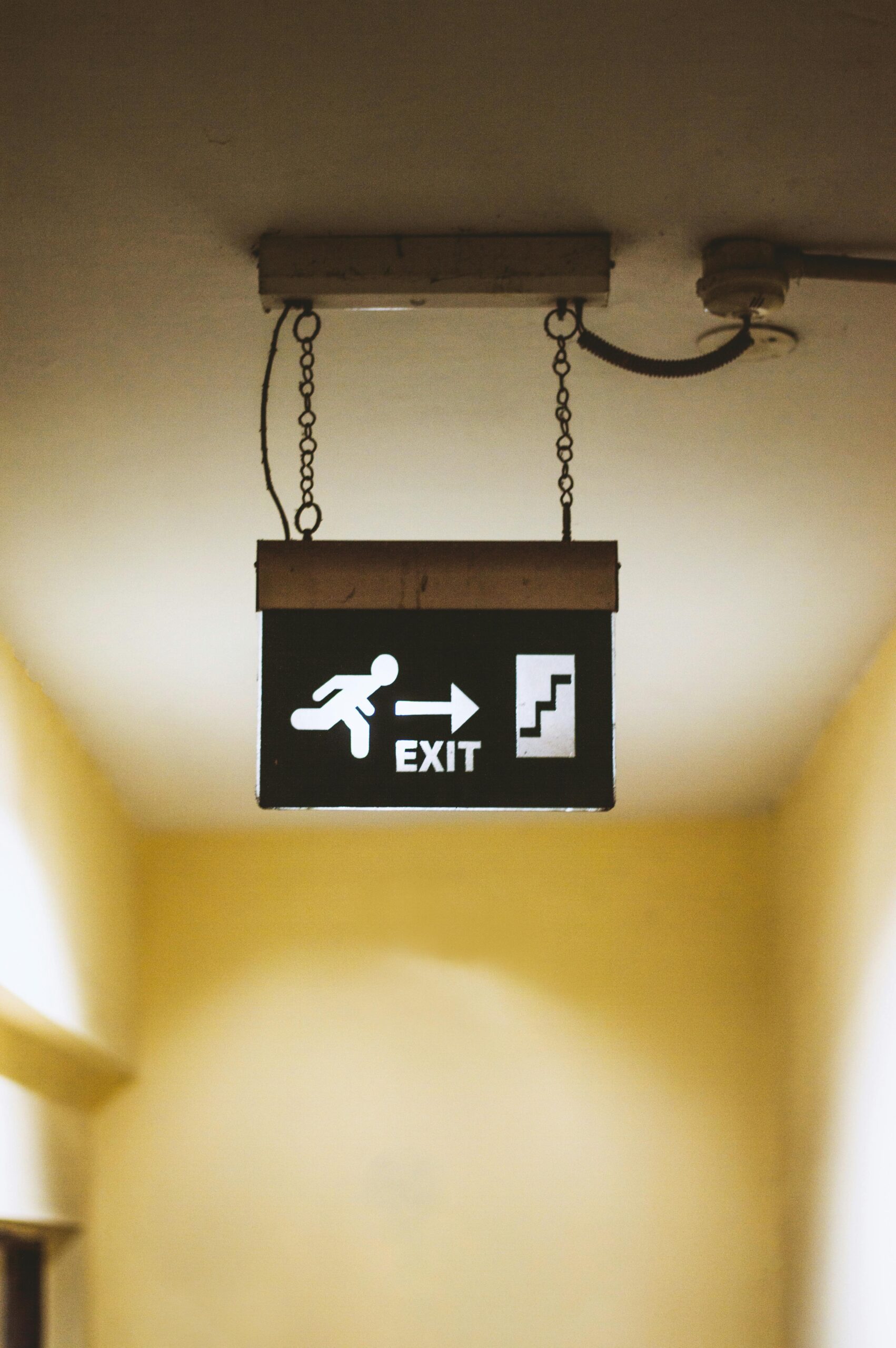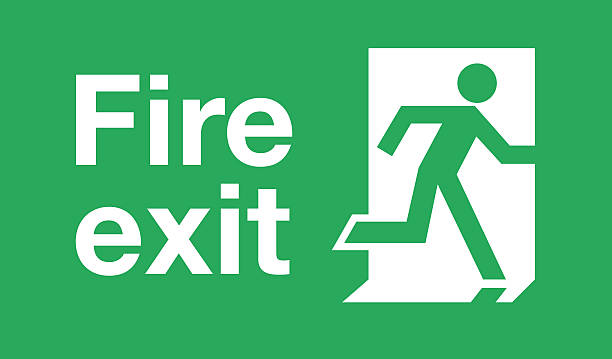
Fire evacuation drills for commercial buildings help protect staff, visitors, and business operations by preparing everyone to act quickly in an emergency. These drills are a key part of any safety plan, giving people clear steps to follow if smoke, heat, or fire ever breaks out.
Most businesses do not realise how important fire evacuation drills are until it’s too late. A real fire can spread fast, and without a plan in place, panic can take over. When people don’t know where to go or how to react, it increases the chance of injury, confusion, and property damage. A simple practice drill can help stop that from happening.
Every business, big or small, is legally required to have a fire safety plan. This includes doing fire evacuation drills at regular times. It shows that you care about your team’s safety and are serious about following the law. A well-run drill helps staff stay calm, know the nearest exit, and understand their role in an emergency.
In this guide, you’ll learn why fire evacuation drills for commercial buildings are important, how they protect your business, and how to run them properly. We’ll also look at what mistakes to avoid, how often you should do a drill, and why it’s worth working with a fire safety expert.
If you own or manage a commercial property, this article will give you all the help you need to keep your team safe and your business protected.
How To Do Fire Evacuation Drills For Commercial Buildings
Running fire evacuation drills in commercial buildings doesn’t need to be complicated, but it does need to be done properly. A good drill helps everyone in the building know exactly what to do if a real emergency happens. It prepares people to act quickly, follow the right steps, and exit the building safely without panic.
Here’s a simple step-by-step guide to doing it the right way:
1. Create a Clear Fire Evacuation Plan
Start by putting together a written plan that includes:
- All exit routes from different parts of the building
- A safe meeting point outside
- Responsibilities for certain staff (like fire wardens)
- How to help anyone with mobility needs
This plan should be simple and easy to follow. Make sure it’s visible and shared with all staff members.
2. Choose the Right Time For the Drill
Avoid times when the building is full of visitors or at its busiest. Pick a time that gives you the best chance to carry out the drill without causing too much disruption, while still being realistic.
3. Inform Staff But Keep It Realistic
You can let your team know that a drill is coming without giving the exact time. This way, it doesn’t come as a complete surprise but still tests how well they respond.
4. Sound the Alarm and Observe
Start the drill by triggering the fire alarm. Watch how staff and visitors react. Are people following the right exits? Are fire wardens helping others? Is the meeting point being used properly?
5. Time the Evacuation
Make a note of how long it takes for everyone to leave the building. In a real emergency, time matters. If the evacuation is too slow, you may need to make changes to your plan or provide extra training.
6. Review and Improve
After the drill, hold a short meeting with your team to talk about what went well and what needs to improve. Ask questions like:
- Did anyone take a wrong route?
- Were there any delays or confusion?
- Was the alarm loud and clear in all areas?
Doing fire evacuation drills in commercial buildings at least once or twice a year helps keep everyone prepared. With each drill, your team will become more confident, and your building will be better protected.

Why Fire Evacuation Drills For Commercial Buildings Are Legally Required
Fire evacuation drills in commercial buildings are not optional, they are a legal requirement under UK fire safety laws. Every employer, landlord, or building manager has a duty to ensure that people in the building are safe if a fire or similar emergency occurs. Carrying out regular drills is one of the key ways to meet this duty.
Under the Regulatory Reform (Fire Safety) Order 2005, every commercial property in England and Wales must have:
- A written fire risk assessment
- A clear evacuation plan
- Staff trained in fire safety procedures
- Fire drills held regularly
Failing to do these things can lead to serious legal consequences. If someone is hurt in a fire and your business has not followed the rules, you could face large fines, legal action, or even imprisonment.
Protecting People and Your Business
The law is not just there to punish. It exists to protect lives. By following it, you are also protecting your own business. When you carry out a fire evacuation drill, you:
- Help your team feel safer and more confident
- Reduce the chances of injury during a real emergency
- Show regulators and insurers that you take safety seriously
Insurance companies may also look at your fire safety record when setting your premiums. A building that holds regular drills is often seen as lower risk.
How Often Should Drills Be Done?
Most commercial buildings should carry out at least one fire drill every 12 months, but many businesses choose to do them every 6 months, especially if they have a lot of staff or visitors. If your building has changed layout, had a recent fire alarm upgrade, or brought in new staff, it’s a good idea to run another drill soon after.
You Should Keep Records
After each drill, keep a written record that includes:
- The date and time of the drill
- How long the evacuation took
- Any problems or delays noticed
- Notes on improvements for next time
These records show that you are meeting your legal duties and help you keep track of improvements over time.
Fire evacuation drills in commercial buildings are not just a box to tick, they are an essential part of keeping people safe and staying legally protected.
What Happens When Fire Evacuation Drills In Commercial Buildings Are Ignored?
Ignoring fire evacuation drills for commercial buildings can have serious consequences. These drills are in place to prepare people for the worst-case scenario. Without them, confusion, panic, and harm are much more likely during a real emergency.
1. Increased Risk of Injury or Loss of Life
In the event of a fire, people need to know how to leave the building safely and quickly. Without regular drills:
- Staff may not know where the nearest exits are
- Fire wardens may not understand their roles
- People could panic, causing delays or accidents
- Vulnerable people, such as those with mobility issues, may be left behind
Even a small mistake during an evacuation can cost lives. Drills help prevent this by turning procedures into habits.
2. Legal and Financial Penalties
If an incident occurs and it’s found that no drills were carried out, a business can face:
- Heavy fines from the fire service or local authority
- Legal claims from injured staff or visitors
- Revoked insurance policies due to non-compliance
In short, failing to do proper drills puts both people and the business at risk.
3. Damaged Reputation
When an emergency is handled badly, the damage isn’t just physical. Businesses may lose the trust of:
- Customers and clients
- Staff and contractors
- The wider community
A poor response to a fire emergency can lead to bad press, staff resignations, and public backlash.
4. Missed Chances to Fix Safety Issues
Regular fire evacuation drills for commercial buildings help identify faults before they become real problems. These could be:
- Blocked exits
- Broken alarm systems
- Staff who don’t understand what to do
- Missing or unclear signage
When drills are skipped, these problems go unnoticed and remain unresolved, putting everyone at risk.
5. Lost Insurance Cover
Insurers expect commercial buildings to follow basic fire safety rules. If you cannot prove that drills were done and that proper training was given, you may lose cover or face rejected claims after an incident.
In summary, skipping fire drills is more than just poor practice, it’s a dangerous decision that exposes the entire building, its occupants, and your business to avoidable risk. Holding regular, well-planned drills shows that safety is taken seriously and keeps everyone better protected.

The Benefits Of Regular Fire Evacuation Drills For Commercial Buildings
Running regular fire evacuation drills in commercial buildings does far more than tick a health and safety box. These drills build confidence, improve emergency responses, and show your commitment to protecting the people in your building. When done properly, they bring peace of mind and real business value.
1. Safer Staff and Visitors
The biggest benefit is also the most obvious, keeping people safe. During a drill, staff learn:
- Where all exits are located
- How to assist others who may need help
- Where to assemble outside
- What to do if smoke or heat blocks their way
Knowing these things saves precious seconds during a real emergency, helping prevent harm and panic.
2. Clear Roles and Responsibilities
Fire evacuation drills help fire wardens and managers understand their tasks during an emergency. This includes checking rooms, guiding people, helping with lifts or stairs, and reporting to the fire service once outside. Regular practice makes these roles second nature.
3. Quicker, More Organised Evacuations
Without practice, evacuations can be slow and chaotic. But when drills are done often:
- People know where to go
- Routes stay clear and well-marked
- Delays are spotted and removed in future drills
This leads to smooth, calm evacuations that get everyone out safely and in good time.
4. Proof of Compliance
By doing regular drills and keeping records, you can show:
- You meet fire safety law requirements
- You’re ready for inspections by fire officers
- You take your duty of care seriously
This also helps protect your business in case of any future claims or reviews.
5. Better Emergency Planning
Each drill teaches you something new. Perhaps an exit is blocked, or the alarm can’t be heard in part of the building. These findings help improve your fire plan over time, making your business safer and better prepared with every practice.
6. Stronger Team Confidence
Finally, regular drills help staff feel safer. Knowing that there’s a clear plan and that it’s been tested builds trust between employers and employees. It shows you care, and it gives people the confidence to act without fear in an emergency.
In short, fire evacuation drills in commercial buildings protect lives, reduce risk, and make your business stronger, safer, and more professional.
Let’s Get Your Business Fire-Ready Today
Hiring a professional to carry out fire evacuation drills for commercial buildings is one of the smartest decisions I’ve seen a business make. It’s not just about ticking a box. It’s about making sure your team knows exactly what to do when every second matters.
I’ve worked with business owners who thought they were prepared, until we ran a proper drill and found blocked exits, faulty alarms, or complete confusion among staff. That’s why doing these drills regularly, with expert help, is so important. It brings real issues to light and helps fix them before lives and property are put at risk.
At Legacy GLM Group, we take safety seriously. We help businesses like yours carry out clear, effective fire evacuation drills that actually work in real-life situations. We don’t do guesswork. We come in, assess your site, walk you through your current plan, and help you practise it with your team.
From assigning fire wardens to spotting weak spots in your escape routes, we make sure your building and people are fully prepared. No fuss, no confusion, just simple, straight-forward training and support that protects your business and everyone in it.
If you own or manage a commercial property and haven’t had a proper fire drill in a while, or ever, now is the time. Don’t wait until there’s smoke to find out your team isn’t ready.
Call Legacy GLM Group today on 02392 985 776 to book your fire evacuation drill and make your business safer from day one.
Share This Post
Quick Links
- How To Do Fire Evacuation Drills For Commercial Buildings
- Why Fire Evacuation Drills For Commercial Buildings Are Legally Required
- What Happens When Fire Evacuation Drills In Commercial Buildings Are Ignored?
- The Benefits Of Regular Fire Evacuation Drills For Commercial Buildings
- Let’s Get Your Business Fire-Ready Today



